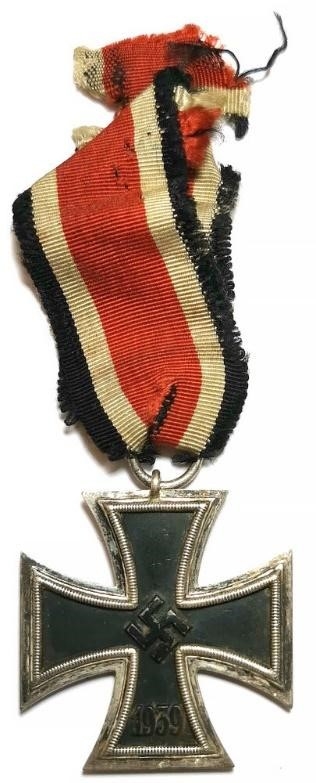WW2 German awards and medals
The Nazi Germany awards system mainly took shape during World War II. Before September 1, 1939, it hardly existed: there were many party and departmental awards, such as for service in the Wehrmacht, service in the Waffen SS, for party service, and so on.
Iron Cross
The primary award in the Third Reich was the Iron Cross, inherited from the Imperial German era. This was exclusively a military award with several classes:
- Iron Cross (2nd Class) (Eisernes Kreuz 2. Klasse)
- Iron Cross (1st Class) (Eisernes Kreuz 1. Klasse)
- Knight's Cross of the Iron Cross (Ritterkreuz des Eisernen Kreuzes)
- Knight's Cross of the Iron Cross with Oak Leaves (Ritterkreuz des Eisernen Kreuzes mit Eichenlaub)
Iron Cross (2nd Class) from our shop
The highest grades of the Knight's Cross of the Iron Cross with Oak Leaves included additional elements like swords and diamonds. Over 3 million people were awarded the Iron Cross 2nd Class, more than 45,000 received the 1st Class Cross, and only 7,384 were awarded the Knight’s Cross of the Iron Cross.
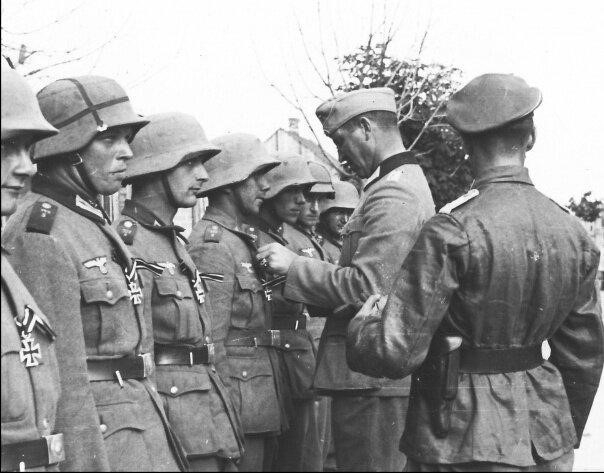
Iron Cross 2nd Class Awarding Process
What was the Iron Cross awarded for?
The process for receiving the Iron Cross was regulated and included a points system. For example, the Iron Cross Second Class was awarded to military personnel from all branches for completing 3-5 missions or for acts of heroism (usually involving risk to life). Soldiers' actions were evaluated by points. To earn the Iron Cross first class, soldiers needed to repeat the same achievements that had earned them the 2nd Class Cross.
What were the visual differences between the various grads of the Iron Cross?
Simply look at the photos below to see the differences in attachment style and placement on the uniform. The Iron Cross 2nd Class ribbon could be threaded through a tunic button instead of wearing the full cross.
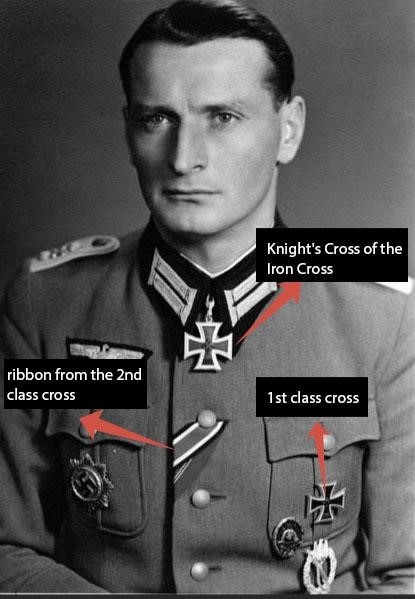
War Merit Cross (War Merit Medal)
The War Merit Cross was awarded to military personnel whose deeds were performed away from direct enemy fire or did not qualify for the Iron Cross. The War Merit Cross without swords (as well as the War Merit Medal) was given for contributions away from the battlefield (in the rear) and to civilians (policemen, employees, officials, workers, entrepreneurs). Initially, only 1st and 2nd classes existed. On August 19, 1940, the medal and the Knight's Cross were added, followed later by the Golden Knight's Cross.
The War Merit Cross became the most widely distributed award of the Third Reich, as it was awarded for numerous, even minor achievements. Consequently, it held low prestige in the German military. Over 4 million people were awarded the War Merit Medal during the war.
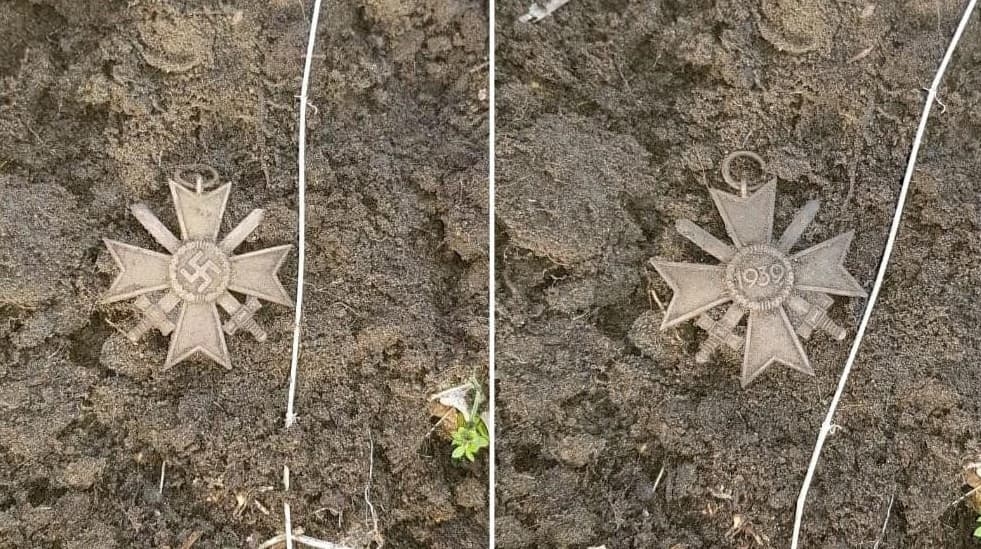
War Merit Cross found near the Gumrak airfield by the StalingradFront.com team
The Most Popular Award on the Eastern Front – Wound Badge
During excavations, our team frequently finds Wound Badges, which were the most commonly awarded on the Eastern Front, reflecting the high intensity of fighting on Soviet territory. As the name implies, these badges were awarded for wounds received in combat. There were three classes of the award: 3rd Class (black badge) for one or two wounds, 2nd Class (silver badge) for three to four wounds or severe injuries, such as loss of hearing, a limb, an eye, or facial disfigurement, and 1st Class (gold badge) for five or more wounds, or serious injuries like complete blindness or severe damage to the musculoskeletal system.
Interesting fact: Near Stalingrad, we sometimes find Wound Badges made of Bakelite. Strangely, this material seems to appear only in this region.
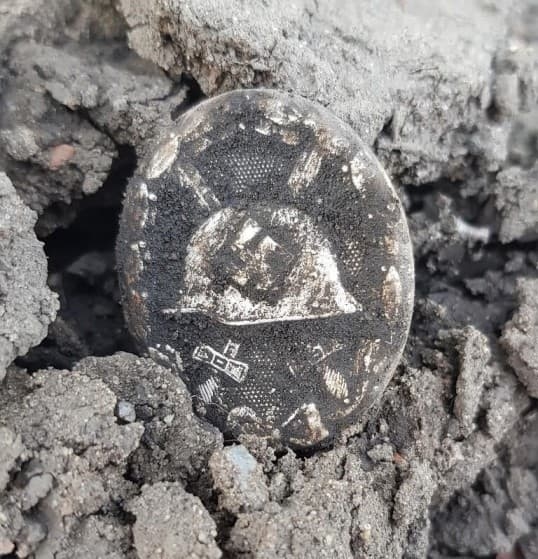
Silver Wound Badge found by our team
Infantry Assault Badge
A fairly popular German award, the Infantry Assault Badge was awarded for assault attacks, counterattacks, reconnaissance operations, and hand-to-hand combat. It came in two grades – silver and bronze – and was worn on the left side under the Iron Cross 1st Class. It was awarded directly by a combat commander in the field.
Interesting fact: Our team occasionally finds stamped Infantry Badges during excavations near Stalingrad, which are considered rare.
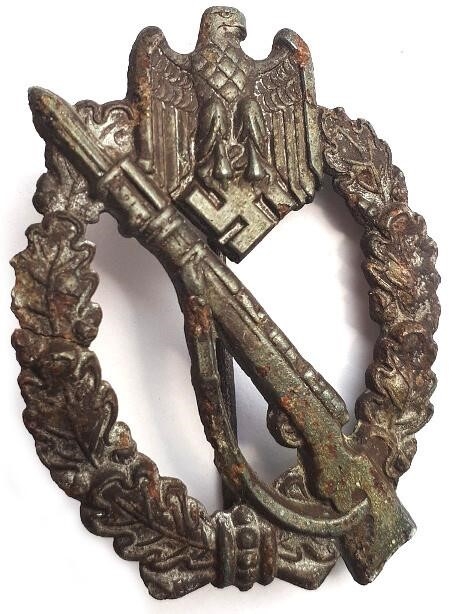
Infantry Assault Badge from Stalingrad battle
General Assault Badge
The General Assault Badge was awarded to those who took part in offensive operations but did not serve in the infantry and therefore could not qualify for the Infantry Assault Badge. Typically, this included engineering corps, artillery, cavalry, anti-tank troops, and anti-aircraft units. Medical personnel wounded in the field were also eligible for this award.
Interesting fact: The rarest types of this badge are variations: General Assault Badge awarded for 25 and 50 assaults.
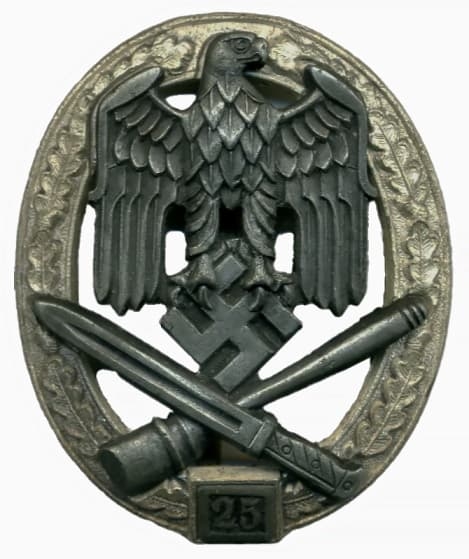
General Assault Badge for 25 assaults
Panzer Badge
The Panzer Badge - a German World War II award given to tank crews under the following conditions:
- Participation in three or more separate attacks;
- Receiving a wound during a combat operation;
- Demonstrating exceptional bravery in battle.
Initially, there were two types of Panzer Badges – bronze and silver. However, during WWII, the need arose to distinguish veterans from other crew members, leading to the introduction of four additional classes of the Panzer Badge in June 1943, specifically:
- 25 days in combat;
- 50 days in combat;
- 75 days in combat;
- 100 days in combat.
Naturally, these badges are quite rare, making them highly valued by collectors.
Like other similar badges, they were worn on the left side under the Iron Cross 1st Class or equivalent award.
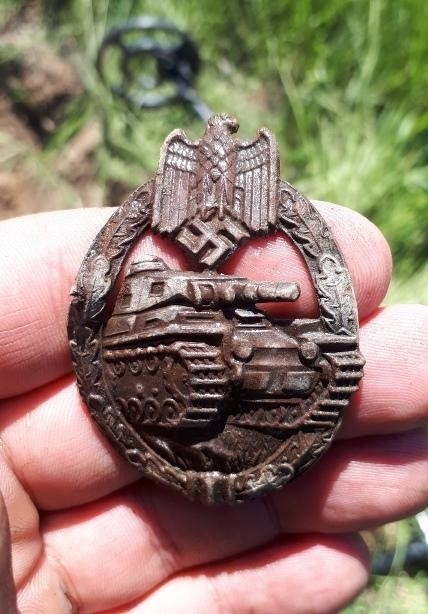
Stamped Panzer Badge from Stalingrad
Close Combat Clasp
The Close Combat Clasp is an interesting and relatively rare award, as it was only issued for about 2.5 years from 1943 to 1945. It was awarded to soldiers who participated directly in hand-to-hand combat. The proximity of the fight was determined by whether the soldier could see «the whites of the enemy's eyes». Before 1943, the Infantry Badge was awarded for participation in close combat, but due to the intensity of fighting on the Eastern Front, almost every soldier who spent a few weeks on the front lines could qualify for the Infantry Badge. The Close Combat Clasp was therefore created to recognize the most experienced “hand-to-hand fighters”. It had three classes: «the Bronze Badge» - for 15 days of close combat, «the Silver Badge» - for 30 days of close combat, and «the Gold Badge» - for 50 days of close combat.

In this article, we’ve covered the primary German awards frequently found during our excavations on the Eastern Front. There were, of course, many more awards in the Third Reich: we haven’t touched upon awards of the Luftwaffe and Kriegsmarine, party awards of the NSDAP, or awards from various German organizations (RAD, Hitler Youth, etc.). We’ll definitely write more about these awards, and if you’re interested in acquiring WWII relics, they are always available in our store. Most of these are German awards found in Stalingrad, near Kursk, in Königsberg, and in other cities in Russia. We mainly offer German awards and medals. You can view the full catalog of awards at this link.

